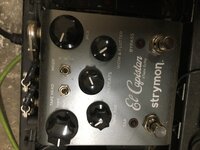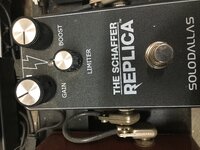I use several guitar effects pedals (a couple analog and a Line 6 HX Stomp). I've been taught that the "level" knob/parameter for an effect simply controls the volume of that effect. But honestly sometimes it seems like it's more than that. For example, take distortion effects - when I turn the level down on some distortion effects it sounds like I'm losing more than just volume (e.g., the arbitrato fuzz effect on the HX Stomp) - it sounds like I'm also actually losing some of the effect itself (in this case, distortion)... I don't know if it's in my head or not, but just to be safe I will typically leave the level of distortion effects quite high and simply use a volume pedal to lower the volume of the effect once I need it in whatever song I'm playing.
Thoughts? Is it just in my head?
Thoughts? Is it just in my head?




